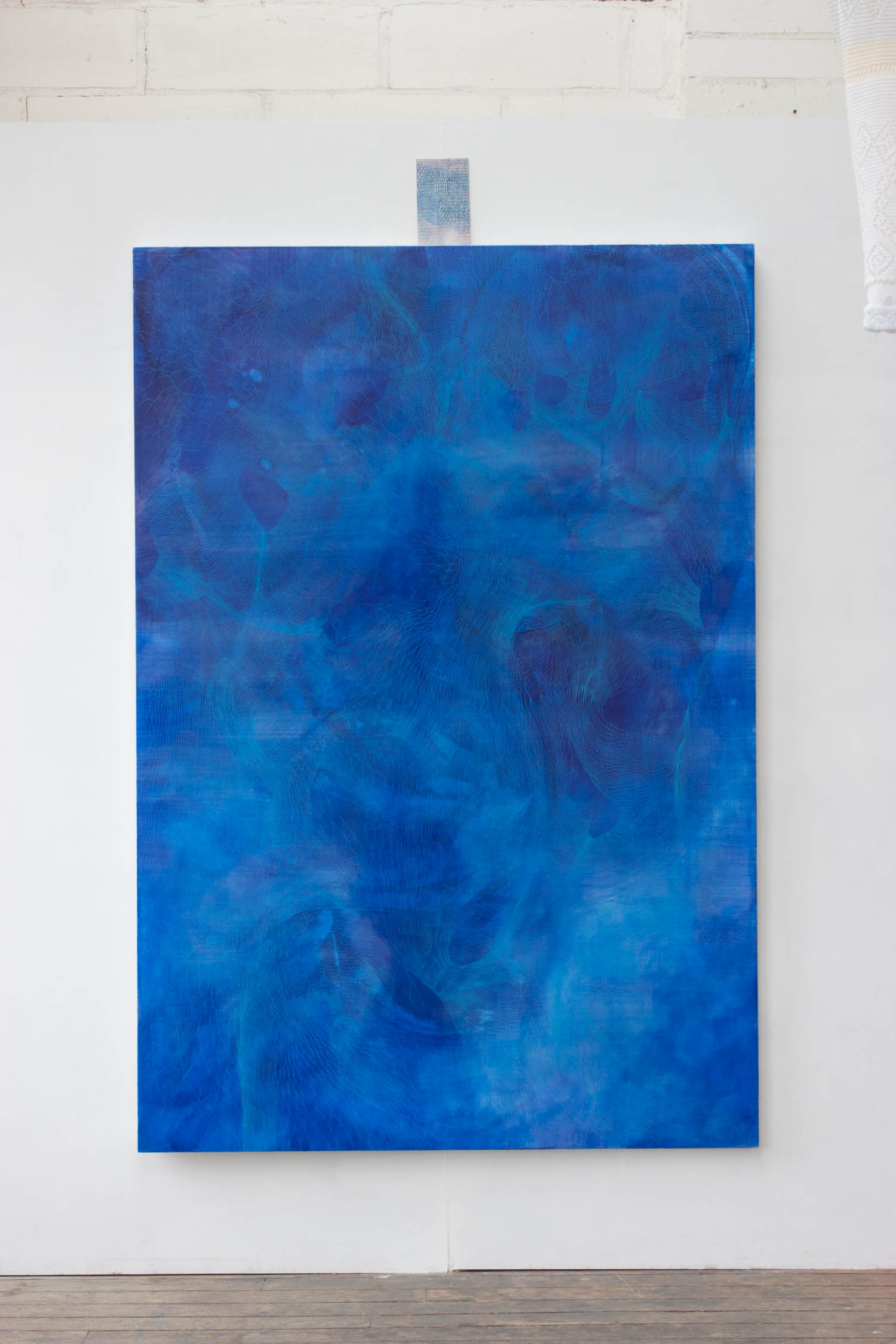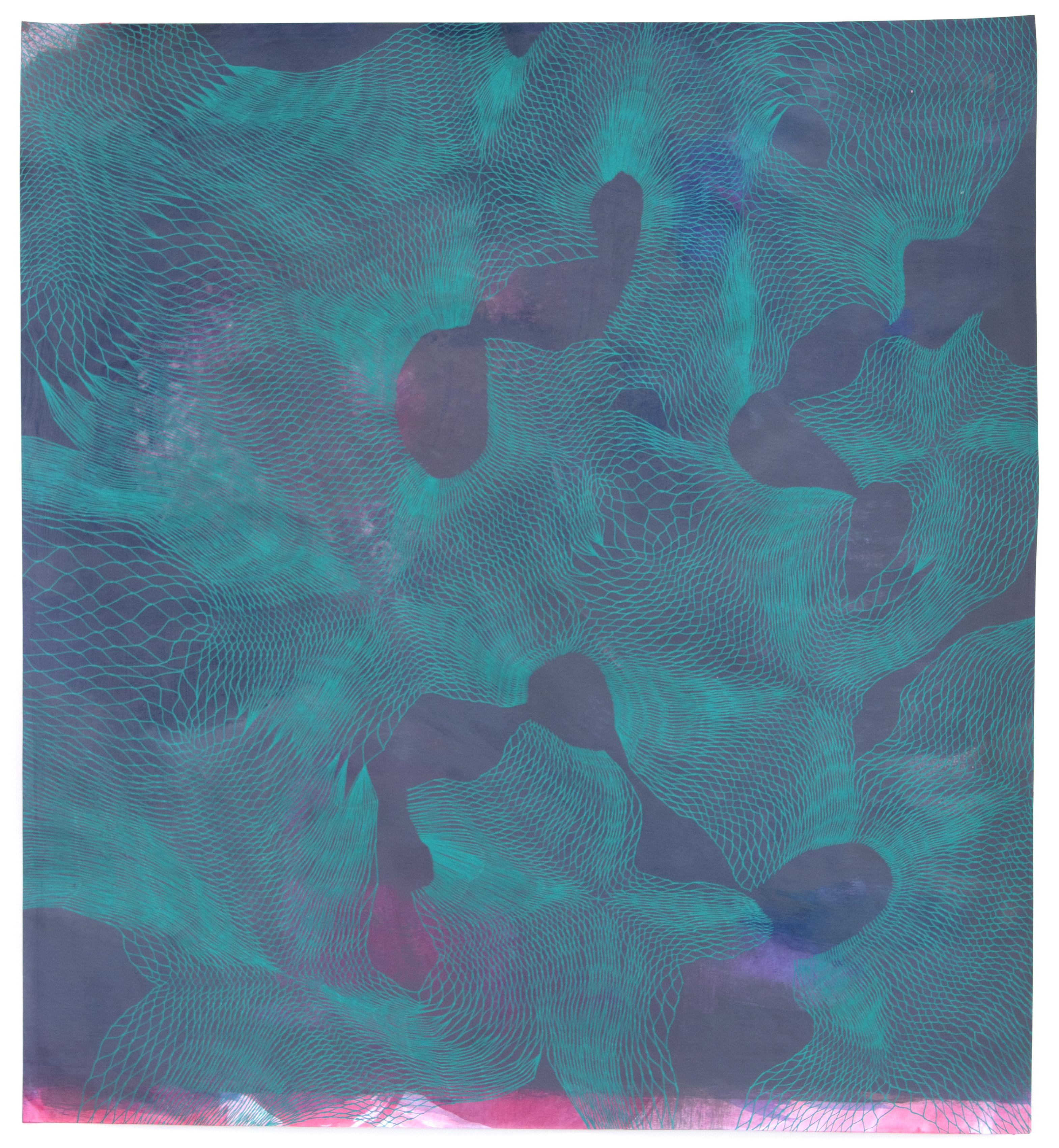about
Biography
Natalie Ryde (b.1981) is a London based artist with a cross-disciplinary practice. Currently Jewellery Lecturer at University of Creative Arts (UCA), Farnham and Artist-in-Residence for Bow Arts Schools, Natalie balances studio practice and pedagogical work in the cultural and education sectors. She is a studio holder at Crawley Road Studios N22 and is the studios’ event curator and community engagement lead.
Artist Statement
Natalie Ryde’s art practice encompasses drawing, painting, printmaking and 3-Dimensional object making. United by an expanded drawing approach and often dominated by a densely drawn lattice network, Natalie’s varied creative output explores the dichotomy between theoretical explanations of life and the physical experience of living. It touches on reconciling her rational and emotional responses and accepting composite states. Recent bodies of work have predominantly focused on large scale paintings and smaller drawn and painted works on paper in acrylic ink. The repetitive build up of woven lines in these layered works alludes to time both on a momentary and continuing basis but also as layers of history or distance into space. There is often a degree of hybridity in the work, crossing between drawing and painting, making, placement of objects in relation to 2-Dimensional pieces, a back and forth conversation between works in different media and dimensions. Her research is underpinned by both close observation of nature, the world she encounters, and a hunger for knowledge across the fields of science, mathematics and literature. Drawing for Ryde is both a tool for research and a process to contemplate, reconstruct and reimagine the structures and forces that lie behind and influence the lived experience.
“I look at natural structures that replicate at different scales and imagine their invisible, vital, animating energy. I think about the cosmic forces, tides and elements that impact the world around me and space beyond. I am drawn to patterns I observe both in nature and the man-made environment and the way objects and places are shaped by their interactions, particularly by the repetitive rhythms of life. There is a grounding in pattern, a security that things will continue, like reaching the edges of a map, there is a certainty that the terrain extends beyond the visible. Each painting starts with an idea which can come from all kinds of research or sources whether that’s in quantum physics, literature, a fleeting moment of realisation, a heart-moving observation of colours in a landscape; it could be a feint inkling or a concrete brief for a commission but in the end that doesn’t matter. When someone else sees that painting they bring their own life experience, their niche knowledge to it and it becomes something else, something personal to them and that, for me, is the magical moment where the art takes on a new life.”
Natalie turns to the made objects in her studio to inform many of the pieces, often working from what she calls “expanded knots”, a series of small sculptures with a starting point in mathematical “prime knots” which have the feeling of 4-Dimensional forms like a Klein Bottle or a Mobius Strip. These objects are made from crocheted wire and yarn or strips of paper, old drawings, tape and cardboard expanding a single knotted loop into a 3-Dimensional structure. She makes collages, drawings and paintings to decipher how these complex forms can be represented on the 2-Dimensional plane and in turn these curves, angles and directions of line help to lay down the first compositional lines in a painting. With a First Class BA(Hons) and PG (Dip) in Jewellery, the making involved in the process is important to Natalie and she maintains that in every drawing there is a process of making and in every object a process of drawing, a mantra that seeps through into her work as an educator.
“I look at natural structures that replicate at different scales and imagine their invisible, vital, animating energy. I think about the cosmic forces, tides and elements that impact the world around me and space beyond. I am drawn to patterns I observe both in nature and the man-made environment and the way objects and places are shaped by their interactions, particularly by the repetitive rhythms of life. There is a grounding in pattern, a security that things will continue, like reaching the edges of a map, there is a certainty that the terrain extends beyond the visible. Each painting starts with an idea which can come from all kinds of research or sources whether that’s in quantum physics, literature, a fleeting moment of realisation, a heart-moving observation of colours in a landscape; it could be a feint inkling or a concrete brief for a commission but in the end that doesn’t matter. When someone else sees that painting they bring their own life experience, their niche knowledge to it and it becomes something else, something personal to them and that, for me, is the magical moment where the art takes on a new life.”
Natalie turns to the made objects in her studio to inform many of the pieces, often working from what she calls “expanded knots”, a series of small sculptures with a starting point in mathematical “prime knots” which have the feeling of 4-Dimensional forms like a Klein Bottle or a Mobius Strip. These objects are made from crocheted wire and yarn or strips of paper, old drawings, tape and cardboard expanding a single knotted loop into a 3-Dimensional structure. She makes collages, drawings and paintings to decipher how these complex forms can be represented on the 2-Dimensional plane and in turn these curves, angles and directions of line help to lay down the first compositional lines in a painting. With a First Class BA(Hons) and PG (Dip) in Jewellery, the making involved in the process is important to Natalie and she maintains that in every drawing there is a process of making and in every object a process of drawing, a mantra that seeps through into her work as an educator.
Process
There is an intention at the start of any piece of work but no fixed outcome, as washes, gestural brush marks and networks build, there is a cause and effect process that presents surprises and problems that Natalie often describes a “battle” as she intuitively tries to control the different forces at play in the compositions. Once the initial painted layers are in place and the lattice begins to emerge, the process is set in motion and the work takes over, with the artist making decisions on which areas will be pushed back with further ink washes before continuing the lattice into the foreground. Drawing and painting predominantly in acrylic inks, colour and line are layered in degrees of concentration and intensity to create depth and chromatic complexity. Gesso layers add opacity and bring light back in, applied in thick brushstrokes, allowed to partially dry and then rubbed back, these chalky layers add a chiaroscuro quality to the surface. Brushes and rags are used to apply and remove pigment and paint mediums in contrast to the intricate line work which is executed in dip pens or refillable, 0.8mm nib, ink drawing pens. Drawings made directly onto the paper surface are made with fine nib, archival ink pens where tonal depth comes from the contraction of the woven lines into finite space. Natalie employs a free-hand generative drawing technique reminiscent of textile construction, a skill she attributes to the generations of textile workers in her family lineage. Inherited by nature rather than nurture, Natalie imagines the pattern of labour locked into her genetic memory. The time taken to produce a drawing can be seen in the moment to moment marks made on the surface and these notions of time-passing and work-done are of value to the artist descended from a craft tradition in Nottingham frame-work knitting and lace-making. These techniques can be seen more directly in the hyperbolic crocheted sculptural forms which she holds or observes as she draws.
The printmaking branch of Natalie’s practice links directly to her drawing and making practice. She produces all elements of the process herself, from hand drawing positives, to exposing screens and pulling the squeegee across the printing bed. She often works in gradient colour and lays strips of cut paper onto the printing surface to produce unique state and variable edition prints. Working live on the printing bed making intuitive decisions during printing introduces an element of surprise and discovery in the process which in turn feed back into the painting studio. Natalie has a several small run editions of screen-prints and unique state prints available through Gina Cross Art.
Educator work and current projects
Alongside her studio practice, Natalie works as an artist educator and art directs participatory events with high profile museums, heritage sites, galleries and arts organisations such as Historic Royal Palaces, South London Gallery, Tower Bridge as well as supporting community led initiatives. She is Bow Arts artist-in-residence at St.John the Baptist School in Islington for the 2022/23 academic year and is a visiting drawing lecturer for BA(Hons) jewellery, glass and ceramics students at UCA.
Studio
Natalie works at Crawley Road Studios, London N22 near Turnpike Lane, Wood Green and Bruce Grove in Tottenham. As well as being a studio holder, Natalie coordinates open studios events and community engagement and runs the @crawleyroadstudios Instagram page and Facebook group. She produces her screen-print editions at Bainbridge Print Studios in Elephant and Castle and has previously printed editions with Jealous London.






